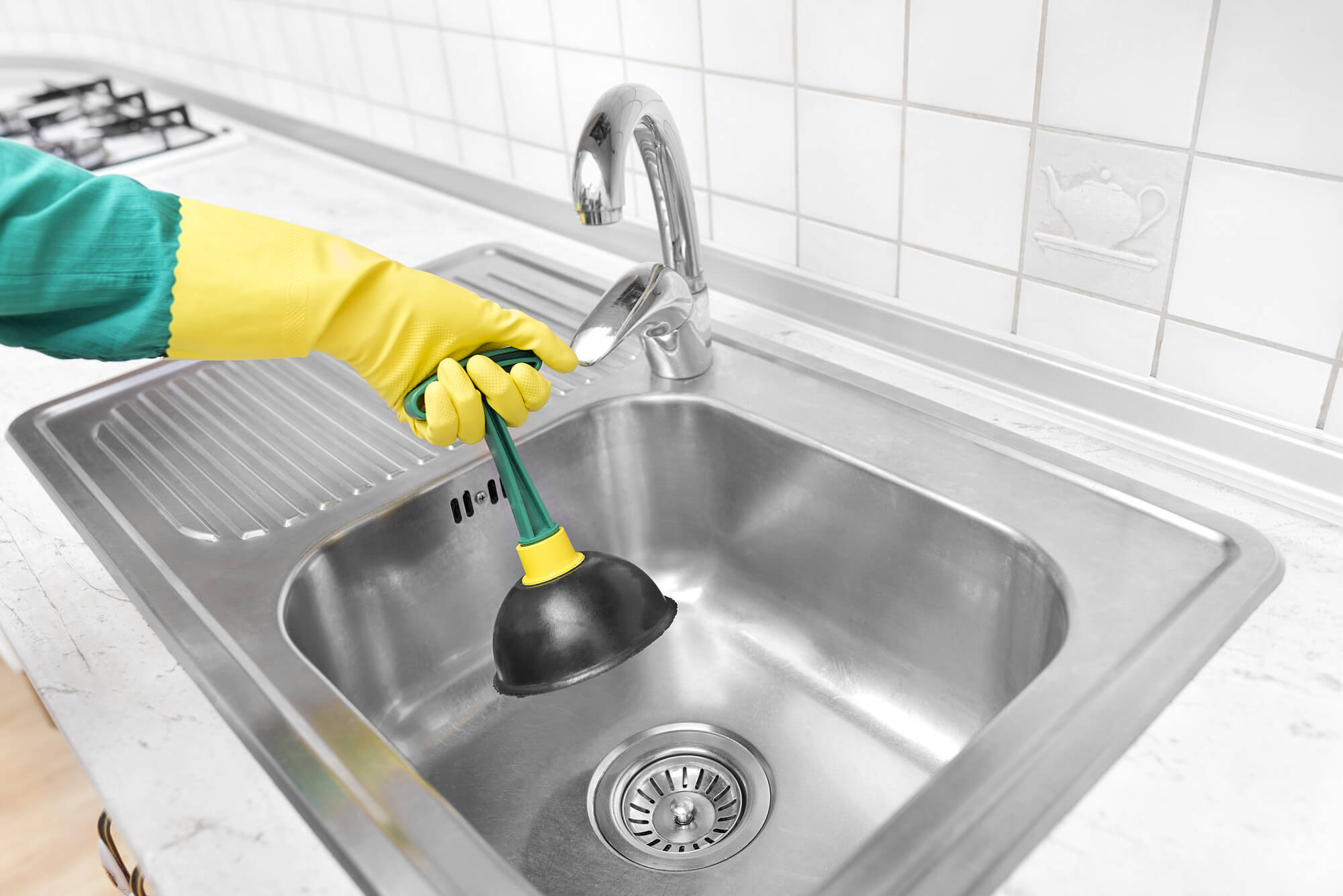How do you feel in regards to 4 Tips to Fix a Slow Draining Sink?

Intro
We have actually all existed: You're cleaning your teeth or cleaning your hands, and you see the water merging in the sink. As opposed to swiftly swirling down the drain, it remains, turning your once-refreshing morning routine into a miniature swamp scene. A slow-draining sink isn't simply bothersome; it's typically a sign of larger pipes issues hiding below the surface. The good news is that the majority of slow-draining sinks can be taken care of with a little know-how, a few basic tools, and some patience. Prepared to tackle this project head-on? Let's roll up our sleeves and dive right in.
Comprehending the Root Causes Of a Slow-Draining Sink
Before you start poking around in your pipelines, it assists to recognize what might be triggering the downturn. Recognizing the origin makes it simpler to select the ideal solution.
Usual Culprits Behind Slow Water Drainage
So, what's obstructing points up? Generally, it's a mix of daily particles-- assume hair, soap residue, tooth paste deposit, and leftover food bits. Over time, these tiny bits gather and hold on to the pipe wall surfaces, progressively tightening the flow and making it harder for water to travel through. In many cases, mineral deposits from hard water can additionally add to the gunk, creating the perfect storm for stubborn clogs.
When is it Time to Take Action?
If you notice the water draining slower than common, it's a great concept to interfere faster rather than later on. Waiting as well long can result in finish blockages, undesirable smells, or even pipe damage. If the water takes greater than a couple of secs to clear out after shutting off the tap, consider it a red flag and prepare to place on your do it yourself hat.
Devices and Materials You'll Require
The right tools make all the distinction. Luckily, you will not need a fully equipped plumber's van to get the job done.
Crucial Tools for DIY Repairs
A bettor is your go-to beginning point. A little, sink-sized plunger creates suction that can displace small clogs. For more persistent clogs, a drainpipe snake (sometimes called a plumber's auger) functions wonders. A pair of handwear covers, a flashlight, and perhaps a pair of protective safety glasses are also convenient.
Suggested Cleaning Solutions
Moderate recipe soap and hot water can aid break down greasy accumulation. A mix of baking soda and vinegar is a tried and true natural remedy, and enzymatic cleansers offer a more environmentally friendly method. Maintain chemical drainpipe cleaners as a last resort, as they can be rough on your pipes.
Safety And Security First: Precautions and Prep work
Before you launch into unclogging mode, consider safety and security. You're handling potentially filthy water and particles, so slip on a set of handwear covers. If you're using chemical cleansers, make certain the room is well-ventilated and follow the instructions on the label.
Safety Equipment and Work Area Configuration
Put down some old towels or dustcloths around the sink location to capture sprinkles. Eliminate any kind of items that might get in your way, like soap dispensers or toothbrush owners. See to it you have good lighting-- order a flashlight if required.
Step-by-Step Guide to Repairing a Slow-Draining Sink
Now, allow's enter into the nitty-gritty. This detailed procedure will guide you via basic strategies to restore your sink's water drainage.
Step 1: Eliminate and Clean the Stopper
Usually, the stopper (that small plug you lower to block water) is the initial offender. Remove it very carefully and clean off any kind of hair or gunk entraped around its base. Wash it completely prior to placing it back in place.
Step 2: Use a Bettor to Displace Debris
Got that bettor all set? Position it over the drain and give it a couple of company pumps. The concept is to create suction that can loosen any type of obstruction. If you see littles debris floating up, you get on the appropriate track.
Action 3: Try a Drain Snake or Cord Hanger
If the bettor does not do the trick, it's time to bring out the drain serpent. Carefully feed it right into the drainpipe and spin as you go. You might really feel some resistance-- that's likely the clog. Keep twisting and pulling up until you remove the obstruction. If you don't have a drainpipe snake, a corrected wire hanger can work in a pinch.
Tip 4: Use a Do It Yourself Drainpipe Cleanser
An all-natural cleaner made from cooking soft drink and vinegar can break down residual grime. Pour half a cup of baking soda into the drain, followed by half a cup of vinegar. Allow it fizz for around 15 mins, then flush with hot water. This chain reaction usually does wonders for minor blockages.
Step 5: Reconstruct and Check the Sink
Placed every little thing back with each other and run the faucet. Does the water now swirl down the drain at a reputable speed? If yes, offer on your own a pat on the back. If not, do not despair-- there are still a couple of even more dress up your sleeve.
Different Techniques for Stubborn Clogs
Not all obstructions are created equivalent. If your sink still refuses to work together, take into consideration these alternative remedies.
Baking Soda and Vinegar Method
We already touched on this, yet it deserves noting once again. This mild, eco-friendly approach is more secure than chemical cleansers and frequently rather efficient.
Enzymatic Drainpipe Cleansers
Enzyme-based cleaners use all-natural germs to digest raw material. They're an outstanding selection if you're aiming to stay clear of severe chemicals. Simply keep in mind, they may take a bit longer to function their magic.
Chemical Drain Cleaning Company: Benefits And Drawbacks
Chemical cleansers can blast with challenging clogs quickly, but they're not without disadvantages. They can produce warm and fumes, damage pipes if made use of exceedingly, and posture ecological threats. Utilize them moderately, and always comply with the directions very carefully.
Safety Nets to Keep Your Sink Flowing
Prevention is the best cure. By adopting a couple of straightforward behaviors, you can maintain your sink from slowing down to begin with.
Normal Cleaning Up Routines
Clean down the sink container and component area consistently. Get rid of hair or food bits before they have a possibility to wash down the drain.
Avoiding Harmful Materials Down the Drain
Hesitate before unloading coffee premises, grease, or fibrous vegetable scraps down the sink. These culprits hold on to pipeline wall surfaces, creating clogs gradually.
Regular Maintenance Checks
Schedule a quick monthly inspection. Run warm water via the sink for a couple of mins, taking notice of the flow. If it appears sluggish, act quick before it comes to be a full-blown obstruction.
When to Call a Professional Plumbing Professional
Sometimes, regardless of how hard you try, that clog just will not budge. That's when it's time to generate the pros.
Indicators That Suggest a More Significant Problem
If your sink drains slowly despite numerous attempts, or if you see water backing up in various other components (like your shower or toilet), you might have a more severe pipes issue lurking much deeper in the system.
Balancing DIY Initiatives with Expert Assistance
While do it yourself can conserve you money and provide a feeling of success, there's no embarassment in calling an expert. An expert plumbing can evaluate your whole pipes setup, making sure there's no underlying damages or long-lasting problem that can cost you much more later on.
Comparing Prices and Long-Term Solutions
Before making a decision, think about the big picture. An economical, quick fix may address the problem briefly, however investing in a more irreversible option could conserve you cash and anxiety in the long run.
Weighing the Expenditures of DIY vs. Specialist Solutions
DIY solutions usually cost little bit more than the price of a bettor or a bottle of baking soft drink. Professional solutions, on the other hand, included a cost yet may prevent repetitive concerns and pricey fixings later.
Buying High Quality Fixtures and Upgrades
If your sink's style contributes to frequent obstructions, it could be worth updating to higher-quality components or altering the plumbing design. Consider this a financial investment in your house's functionality and comfort.
Conclusion
A slow-draining sink can feel like a minor irritability, yet it's frequently a sign that your plumbing requires a little tender loving care. By recognizing the source, utilizing the right tools and techniques, and devoting to straightforward preventive measures, you can maintain your sink moving easily. And when all else falls short, never ever think twice to call in a specialist-- your home's pipes is worth the investment in treatment and upkeep.
How to Fix a Slow Sink Drain: 7 Methods
Clean the Stopper
Remove and clean the stopper. A pop-up drain stopper and the sloped shape of the sink are designed for optimal debris and build-up collection. If you do not have a drain zip tool, or the tool cannot clear out all debris, another option is to remove and clean the pop-up.
Most pop-ups are held in place with a nut attached to the drain just under the sink. To remove the pop-up, reach behind the drain pipe under the sink to find the pop-up nut. Once the nut is removed, the pop-up can be removed from the sink drain, cleaned, and reinstalled.
Use Homemade Drain Cleaner
Employ a DIY solution. A homemade drain cleaner can clean the drain pipes after the larger debris has been pulled out. The chemical reaction caused by combining two common and inexpensive household products, like vinegar and baking soda, can help break down the mucky build-up on the inside of the drain pipes and get the drain flowing freely again.
Pour 1/2 cup of baking soda down a slow-draining sink. Follow it with 1/2 cup of vinegar. Let the mixture rest for a few minutes. Rinse the solution with boiling water to clear the clog. Clear the Sink Overflow
Clean the overflow. The sink overflow is another place where debris and build-up can be collected over time. If a sink drains slowly and cleaning the drain doesn't work, try to clean the overflow.
The overflow opening is intended to divert water into the drain if it accidentally rises too high in the sink. It also allows air into the drain when the sink is filled with water, helping it drain faster.
Use a Plunger
Give it a good plunging. A plunger can be used on a slow sink drain; it does not have to be reserved for a complete drain stoppage. Plunging can help loosen and dislodge hair and debris in the pipe. To ensure the plunging motion is effective, cover the sink overflow with a rag or some duct tape to make a seal before plunging.
Use a Snake
Try a snake. If straightforward methods aren't working, consider getting a drain auger or snake to clear a bathroom or kitchen sink drain. A drain snake is a thin, flexible metal cable that can be wound or unwound on a reel. It has a drill or corkscrew-like end that can penetrate clogs, dislodge them, and pull them out.
Clean the P-Trap
Unclog the P-trap. If all other methods fail to clear a stubborn clog, the last step before calling a professional is removing and cleaning the P-trap or the drain pipe under the sink with a bend shaped like a "P" rotated 90 degrees, clockwise to the right. That U-shaped bend in the pipe is a top spot for gunk, like hair, food, grease, and debris, to build up and get clogged.
Once you remove the drain pipe, you need a bucket to catch residue, water, and debris. You might need Channellock pliers or a wrench if you can't unscrew the slip nuts by hand.
Tips to Prevent Slow-Draining Sinks
Sinks are only for water, soap, or toothpaste: Use toothpaste correctly and fully lather it in the mouth; do not let globs of toothpaste go undissolved down the drain. Stop hair and debris from going down the drain: Refrain from brushing your hair over the sink, or get a fine mesh drain hair catch for the drain hole. If shaving your face over the sink, wipe away the stubble with a washcloth, and rinse the washcloth and razor in a wash basin. Empty the water into the toilet or tub drain. Clean the sink stopper regularly: Remove the stopper and clean out any hair and dirt that may have lodged in the drain. Flush the sink with hot water regularly: Hot water will help move or loosen hardened or sludgy toothpaste, grease, mineral deposits, and hair. Some experts suggest using boiling water; however, beware since boiling water might melt PVC or crack porcelain.
:strip_icc()/how-to-clean-a-bathroom-sink-drain-01-c728294c8bee42428afdf3e69f449279.jpg)
I hope you enjoyed our part on How to Fix a Slow Draining Sink. Thanks a lot for taking time to browse our article. Kindly take the opportunity to promote this entry if you enjoyed it. Thank you for being here. Please visit our website back soon.
Visit Homepage
 Shaun Weiss Then & Now!
Shaun Weiss Then & Now! Daniel Stern Then & Now!
Daniel Stern Then & Now! Lark Voorhies Then & Now!
Lark Voorhies Then & Now! Sam Woods Then & Now!
Sam Woods Then & Now! Shane West Then & Now!
Shane West Then & Now!